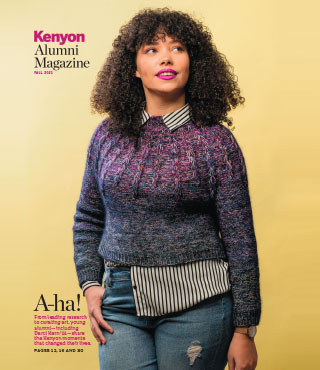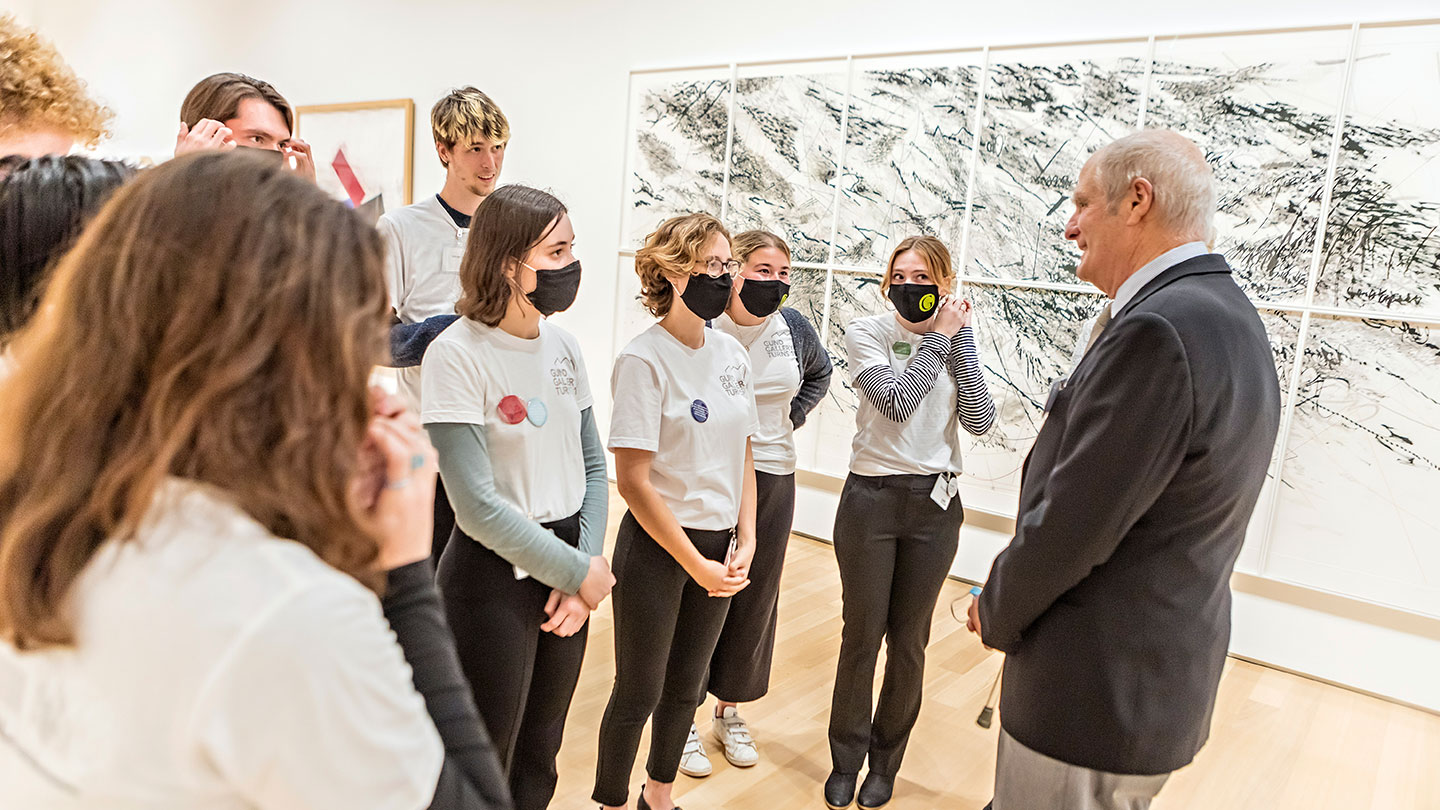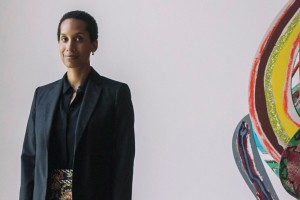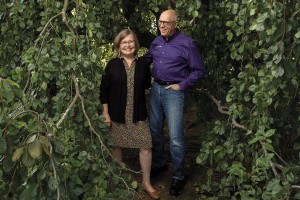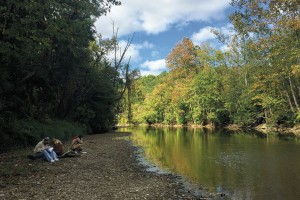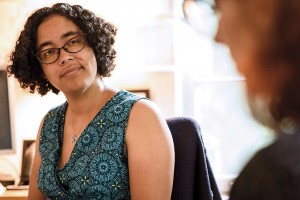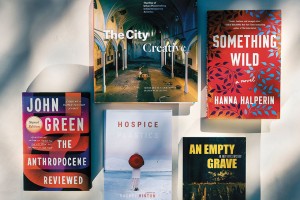“We listen to artists as they challenge new modes of thinking, looking and storytelling which, on a campus, can be a truly transformative way to learn and open your mind,” according to Daisy Desrosiers, the new director and chief curator of Kenyon’s Gund Gallery. “And isn’t that an impactful way to prepare students for the challenges and opportunities ahead?”
The hundred-plus alumni of the Gallery’s student associates program would surely agree. The program, which started when the Gund opened its doors in fall 2011, is based on collective project-based learning pedagogy and “centers a student experience that is unprecedented in the context of academic museums,” according to Desrosiers. Approximately 65 students are hired by the Gallery for paid positions every semester, and recruitment for open spots is highly competitive. The Gallery’s associate director Chris Yates, who has overseen the program since 2015, explained that associates gain experience in all aspects of museum operation — writing wall label descriptions of artworks, collaborating on social media and marketing, and even assisting in curating shows and helping to install them in the Gallery space. And after graduation, many of them use their on-campus experiences to launch careers in the art world and beyond.
Since its opening, the Gallery has sparked countless moments of inspiration, epiphany and connection. As the Gallery celebrates its anniversary this fall with the innovative two-part Collection exhibition, “Call/Response: The Gund Gallery Turns 10,” we asked 10 Kenyon alumni, one representing each year of the Gund’s existence, to reflect on their experiences within the building’s walls, including the art that moved them most.
After all, Desrosiers said, “A museum is a space that epitomizes the ways in which artistic experiences can bind us together, expand our view of the world, of others and ourselves.”
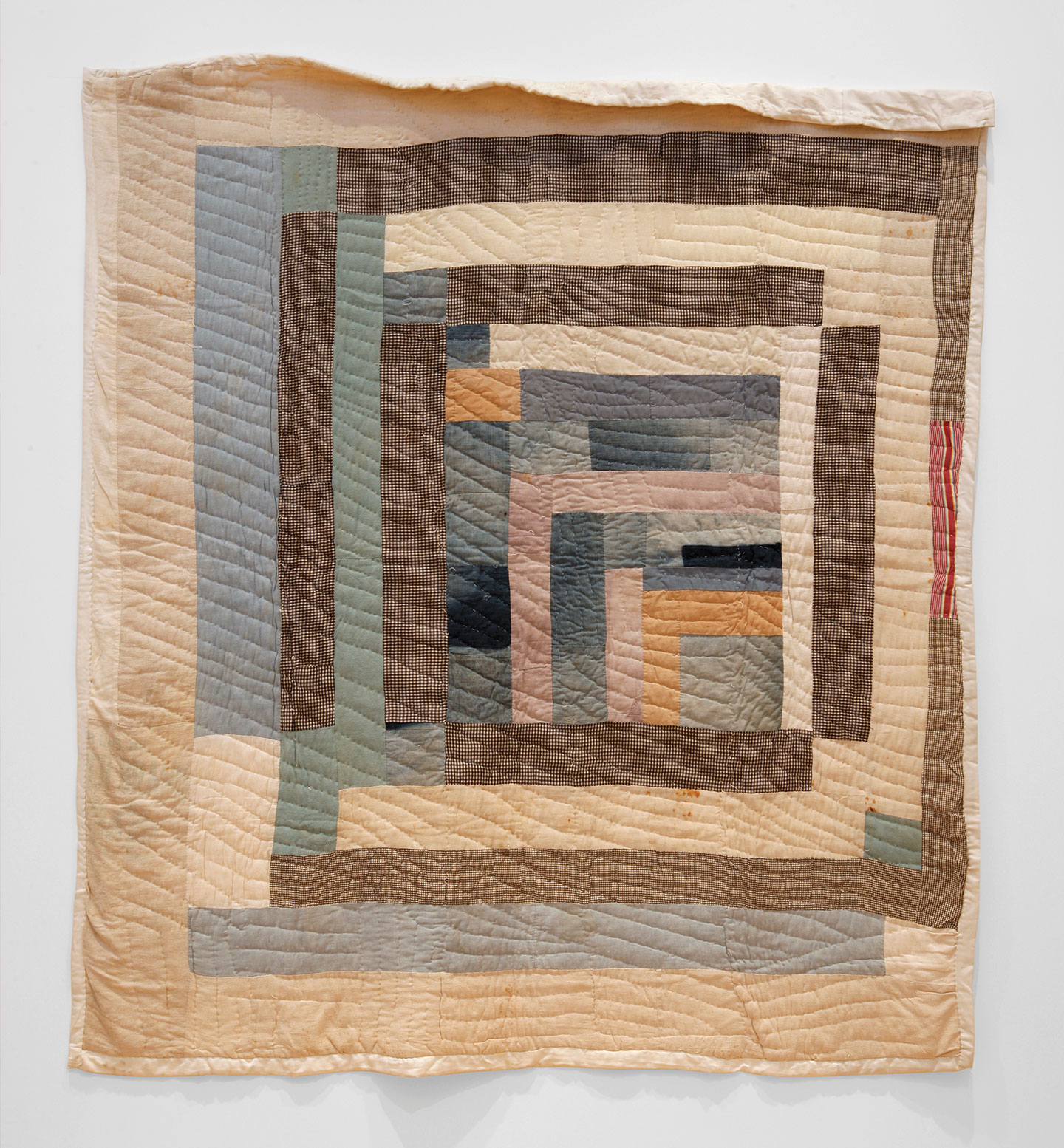
"Housetop Quilt"
Andrew Davenport '12, public historian at the Thomas Jefferson Foundation in Arlington, Virginia
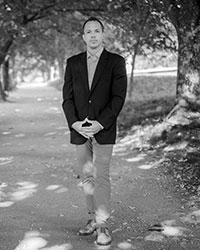 The Gund Gallery featured Nellie Mae Abrams’ “Housetop” quilt (1970) in our “Persistence: The Rural in American Art” show in spring 2012. It was the first time I had seen a quilt made by Abrams, an artist from Gee’s Bend, Alabama, firsthand.
The Gund Gallery featured Nellie Mae Abrams’ “Housetop” quilt (1970) in our “Persistence: The Rural in American Art” show in spring 2012. It was the first time I had seen a quilt made by Abrams, an artist from Gee’s Bend, Alabama, firsthand.
Gee’s Bend quiltmakers reanimate scraps from the past with an eye toward aesthetics and function — quilts keep loved ones warm and protected. As I prepared for a career studying art and history — making mean-ing of the traditions of the past — I couldn’t help but be profoundly moved by Abrams’ example. In 2018, I visited the Gee’s Bend Quilting Collective in Alabama and interviewed artists who had known and been inspired by Abrams. Life had come full circle.
In the Gallery’s first year in 2011-12, associates had the chance to con-tribute to every facet of the museum. We put on three groundbreaking shows that year — “Seeing/Knowing,” “Oxherding” and “Persistence: The Rural in American Art.”
We were busy! I met scores of artists, wrote labels for the artwork, helped with installations and taught myself all about the A/V systems for when we had speakers or films to show. Most importantly, associates were trained in Visual Thinking Strategies, learning how to encourage visitors to engage with and interpret artwork on their own terms. I used this extensively when I taught middle and high school, and while working as an adjunct professor of African American Art History at Fairfield University.
Currently, as I complete my doctoral work in U.S. history at Georgetown University, I am the public historian at the Thomas Jefferson Foundation and the manager of the “Getting Word” African American Oral History Project. The experiences I had at the Gund Gallery have proven instrumental in my personal and professional formation.
Image: Nellie Mae Abrams (American 1946-2005) "Housetop Quilt," ca. 1970. Fabric. From "Persistence: The Rural in American Art" on view March 26 - July 22, 2012.

"The Eyes of Gutete Emerita"
Caleb Bissinger '13, senior director of audio at Next Big Idea Club in Los Angeles
 Because memory is a choice, I choose to remember “The Eyes of Gutete Emerita” like this: They look out at you from two lightboxes mounted side by side on the gallery’s black painted wall. The lightboxes leak fluorescence, an accidental halo, yet the eyes are lusterless.
Because memory is a choice, I choose to remember “The Eyes of Gutete Emerita” like this: They look out at you from two lightboxes mounted side by side on the gallery’s black painted wall. The lightboxes leak fluorescence, an accidental halo, yet the eyes are lusterless.
When Gutete Emerita was 30, she watched a Hutu death squad murder 400 Tutsi men, women and children, including her husband and two sons. She escaped with her life and hid, for three weeks, in a swamp. Asked to write the wall text for this piece when it was exhibited at the Gund, I wrote: “A genocide contains multitudes. In ‘The Eyes of Gutete Emerita,’ we con-front the intimate dimension. What of these eyes? They belong to a name, but we know not the face. They have witnessed national disaster; they conceal private tragedy.” As an associate, I wrote and edited lots of descrip-tive texts, printing them out on creamy card stock, slicing them with a dull paper cutter, and mounting them, unevenly, on the gallery’s walls.
At the opening of “Seeing/Knowing” in 2011, I meekly approached an attendee who was gesticulating wildly, his red wine threatening to leap out of his plastic cup. “Would you mind leaving your drink outside?” I asked, gestur-ing to the nearby painting he was threatening to douse. He looked at the paint-ing, then at me, and said, “So what if I spill on it? I painted the damn thing!”
Working at the Gallery sparked a curiosity in me about art, and I hold that curiosity responsible for the undistinguished years I spent after Kenyon working in the art market. My lasting memory, though, and the most useful these days, is of the three questions we associates were taught to ask patrons as they stood, befuddled, before a work of art. “What’s going on here? What do you see that makes you say that? What more can we find?” I’ve found you can stand in front of anything in your life, ask those questions and be surprised by the answers. They are a reminder to notice the world, to turn what you notice into a story, and to let that story unfold, forever and ever, amen.
Image: Alfredo Jaar (Chilean, b. 1956) Still from "The Eyes of Gutete Emerita," 1996. Color video. Duration: 1 minute, 36 seconds. Courtesy of the artist, NY.

"Wall Drawing #989"
Hanna Washburn '14, visual artist and curator at Beacon in New York
 The “do it” exhibition at the Gund Gallery, in 2013, was really transformative for me. The show consisted of a series of participatory scripts created by artists, and viewers followed the instructions to produce new, site-specific versions of the works.
The “do it” exhibition at the Gund Gallery, in 2013, was really transformative for me. The show consisted of a series of participatory scripts created by artists, and viewers followed the instructions to produce new, site-specific versions of the works.
This was my first encounter with this kind of generative art process, and it opened up my mind. I had the opportunity to participate in the creation of a Sol LeWitt work on the gallery wall. A group of students and Gallery staff collaborated to follow LeWitt’s instructions, which read: “A black not straight line is drawn at approximately the center of the wall horizontally from side to side. Alternate red, yellow and blue lines are drawn above and below the black line to the top and bottom of the wall.” Watching this artwork come to life as we worked was so meaningful, and continues to resonate with me.
After Kenyon, I pursued an M.F.A. in fine art at the School of Visual Arts in New York. Now, I build sculptures from recycled clothing, textiles and found objects. At the Gund Gallery, I first heard the names of many favorite contemporary artists who remain continual sources of inspiration: Julie Mehretu, Kiki Smith, Carrie Mae Weems, Ragnar Kjartansson. I not only learned about these artists but had the opportunity to study their work closely, and even assist in their curation and installation. Working with these pieces so intimately is something I will always hold on to.
Image: Installation of "Wall Drawing #989" by Sol LeWitt from "do it," on view May 3 - Aug. 25, 2013.
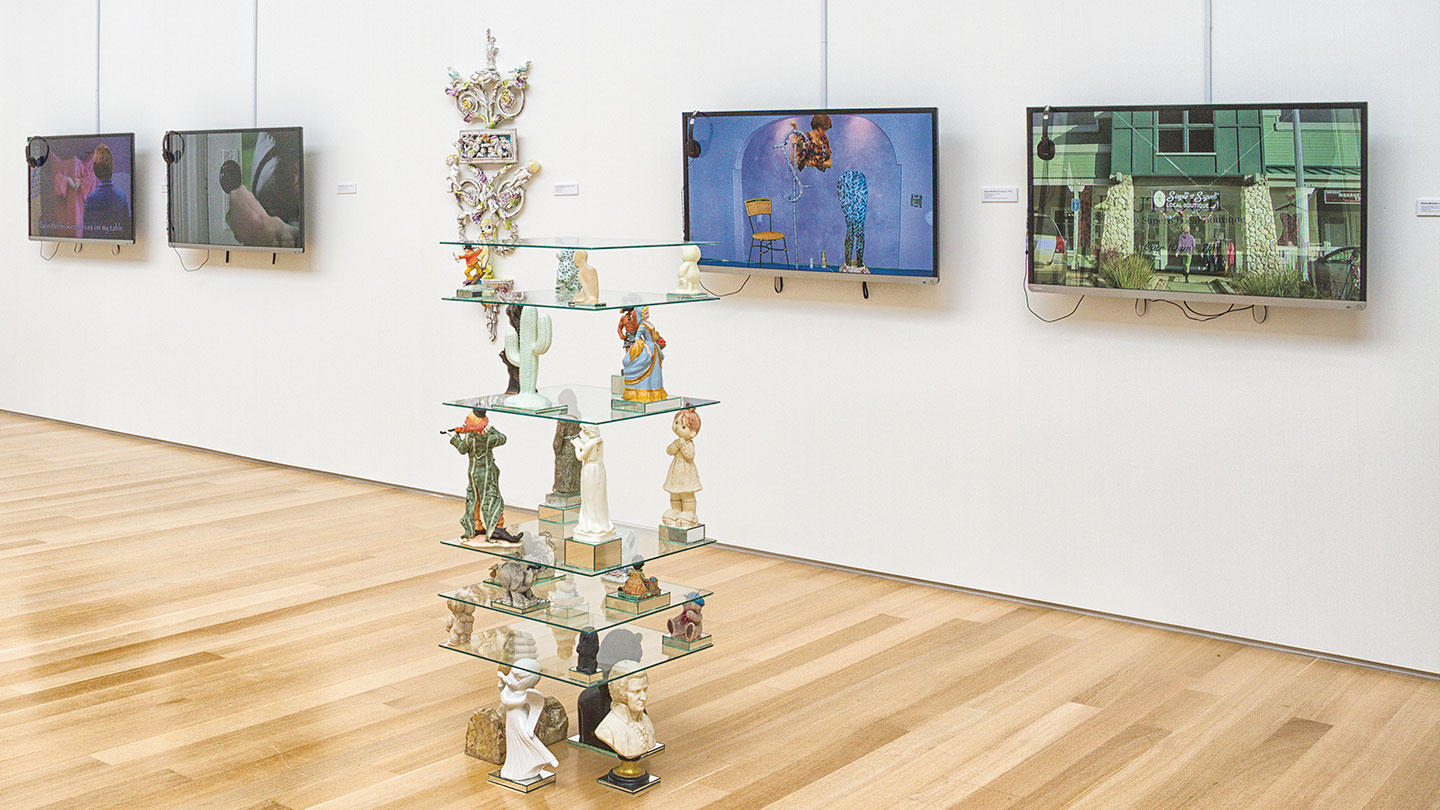
"Whispering Pines 9"
Emily Sussman '15, art advisor, writer and curator in Brooklyn, New York
 A work of particular note that’s stuck with me — it’s somewhat unexpected since I at first didn’t love the piece at all! I loathed it — is Shana Moulton’s video piece in the 2015 exhibition “Tchotchke: Mass-Produced Sentimen-tal Objects in Contemporary Art.”
A work of particular note that’s stuck with me — it’s somewhat unexpected since I at first didn’t love the piece at all! I loathed it — is Shana Moulton’s video piece in the 2015 exhibition “Tchotchke: Mass-Produced Sentimen-tal Objects in Contemporary Art.”
Moulton’s videos explore contemporary anxieties about class, consumer-ism and spirituality. This video was from her “Whispering Pines” series, in which her alter ego, Cynthia, attempts to find peace and hope through the acquisition of objects — often the cheap tchotchkes synonymous with the show’s title. Her videos blur the line between reality and pure metaphysical sensation. The more time I spent with this work, the more I fell in love with its bizarre, dizzying array of visuals and objects. Moulton blithely critiques the idea that we need to spend money to find happiness, but she resolves her protagonist’s plight not with malaise about capitalism, but as a believer: The objects she collects represent a higher power. With humor and a dose of silliness, the objects become alive and dance around her room, transcending their “objectness.” I’m a fan of Moulton’s for life now!
I wore many hats as a Gund Gallery associate, but my favorite memories are from when I worked on the curatorial teams, conducting research and working closely with artists and Gund Gallery staff members. These days, I continue to wear many hats in my work as an art adviser and curator; as director of the New York City division of the Young Collectors League; and as director of communications at the nonprofit Monira Foundation, where I am responsible for our social media marketing strategy and communica-tions between artists, our staff and the board.
Image: Installation view from "Tchotchke: Mass-Produced Sentimental Objects on Contemporary Art" on view Jan. 16 - May 31, 2015.
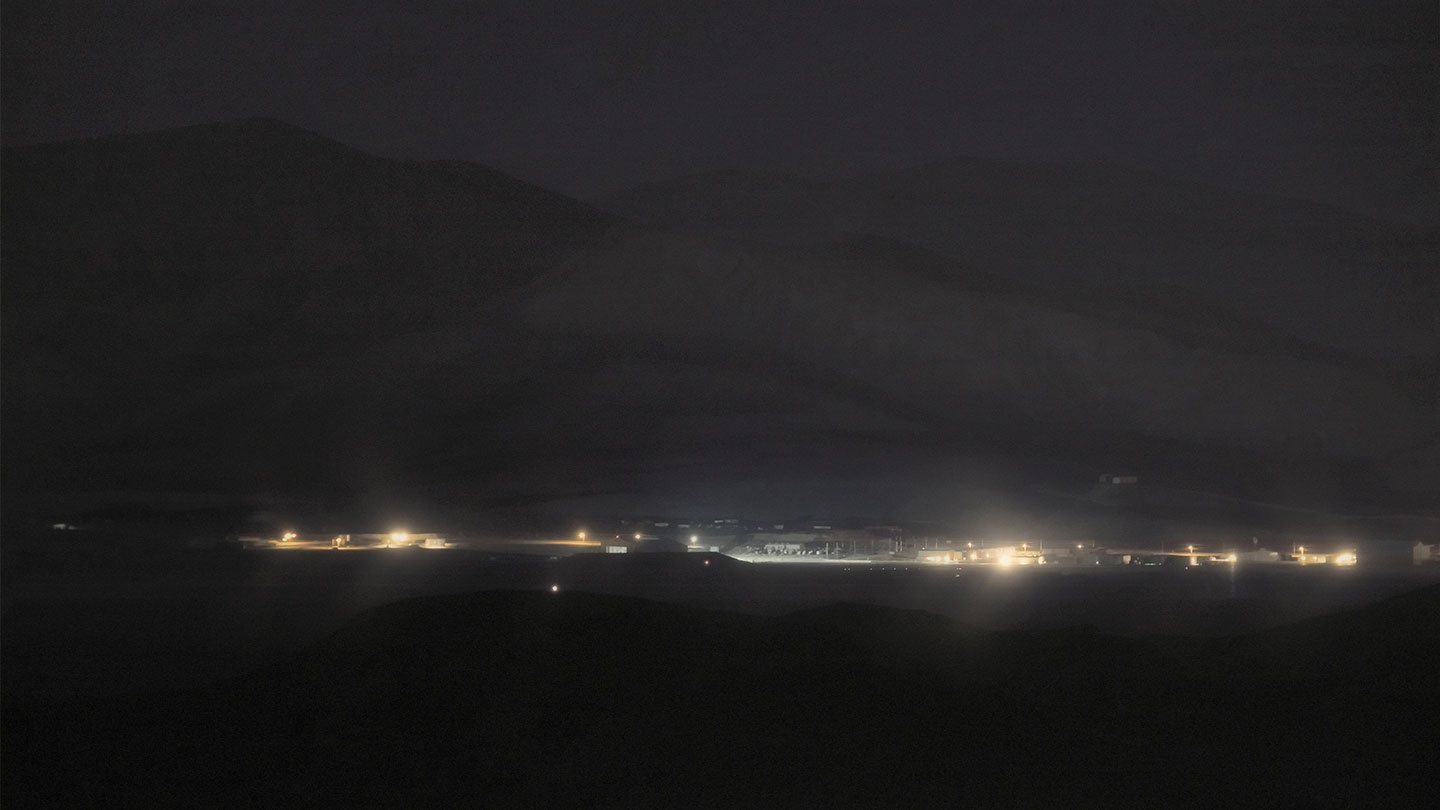
"Detachment 3, Air Force Flight Test Center #2; Groom Lake, NV"
Amy Young '16, community/content manager at Springboard in San Francisco
 I worked with Collections Manager and Registrar Robin Goodman in archiving the Gund Gallery’s permanent collection when it was first gifted. There are a lot of incredible pieces, but I think I understood the gravity of it all when Robin and I were archiving one afternoon, and I picked up a piece of Peruvian pottery that is now in the Kenyon College collection. At that moment, I was responsible for perhaps the oldest thing under the Gund Gallery’s care. There’s a gravity, respect and complexity you tackle when actively caring for art that hardly anyone gets to experience. For a student to handle work like this? Unheard of. In that moment I under-stood Gund associateship as a rare honor, and the fact I got to experience the rest of my time that way was a gift in itself.
I worked with Collections Manager and Registrar Robin Goodman in archiving the Gund Gallery’s permanent collection when it was first gifted. There are a lot of incredible pieces, but I think I understood the gravity of it all when Robin and I were archiving one afternoon, and I picked up a piece of Peruvian pottery that is now in the Kenyon College collection. At that moment, I was responsible for perhaps the oldest thing under the Gund Gallery’s care. There’s a gravity, respect and complexity you tackle when actively caring for art that hardly anyone gets to experience. For a student to handle work like this? Unheard of. In that moment I under-stood Gund associateship as a rare honor, and the fact I got to experience the rest of my time that way was a gift in itself.
Other memorable pieces included Roxy Paine’s “Checkpoint“ and Trevor Paglen’s “Groom Lake, NV,” both excellent meditations on technology’s infil-tration of private and communal space. And Jorinde Voigt is incredible.
I tried to participate in everything the gallery had to offer — hanging new work (I still use “58 from center,” thank you Chris!), curating work and writing labels, visiting Columbus galleries and of course gallery guarding and attending exhibition openings. But what I enjoyed most was archiving. Truly, I owe my early career to Robin Goodman. She helped me land a summer archival job in Baltimore and an archival internship at The Newseum in Washington, D.C., which kickstarted my involvement in the capital’s cultural scene. I’ve since pivoted and now work for an EdTech startup in San Francisco, and I’m spinning up a (very small) production company on the side, but that chain of events can be linked directly to the Gund Gallery and Robin’s generosity. The Gund folks helped us all understand not just contemporary art, but how the art industry functions, and I’ll count those times among my best.
Image: (above) Trevor Paglen (American, b. 1974), "Detachment 3, Air Force Flight Test Center #2; Groom Lake, NV; Distance ~26 miles," 2008. C-print. 40 x 50 in. Image courtesy of Metro Pictures, Altman Siegel Gallery, and Galerie Thomas Zander; (right) Amy Young '16 holding a piece of Peruvian pottery.

"The Visitors"
Natasha Siyumbwa '17, Africa chief of staff at Idinsight in Lusaka, Zambia
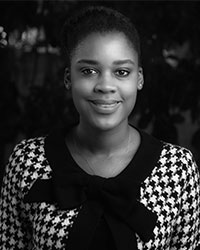 I first set foot in the Gund Gallery during the summer of 2013, on a tour during my international student orientation. Immediately, I was captivated by the featured video installation “The Visitors,” by Ragnar Kjartansson. Even now, seven years later, it is difficult to put into words what the exhibit made me feel. I remember lying down on the floor between two people, who later became my best friends, and feeling overwhelmed by feelings of peace, companionship and awe. It was the first time I was truly moved by a work of art, and it led me to applying to become a Gund Gallery associate a year later.
I first set foot in the Gund Gallery during the summer of 2013, on a tour during my international student orientation. Immediately, I was captivated by the featured video installation “The Visitors,” by Ragnar Kjartansson. Even now, seven years later, it is difficult to put into words what the exhibit made me feel. I remember lying down on the floor between two people, who later became my best friends, and feeling overwhelmed by feelings of peace, companionship and awe. It was the first time I was truly moved by a work of art, and it led me to applying to become a Gund Gallery associate a year later.
In my senior year, I was promoted to a lead curator (research) position and had the opportunity to co-lead the curation of “Black Women/Black Lives,” and “Zapatista: Imagery of the Peasant Revolutionary.” I now work as the Africa Chief of Staff for IDinsight, a nonprofit organization that uses data and evidence to help leaders combat poverty worldwide. The organization and research skills I gained from working as a Gund Gallery associate have definitely been put to good use in this role.
Image: Ragnar Kjartansson (Icelandic, b. 1976), installation view of "The Visitors," 2012. Nine channel HD video projection. Duration: 64 minutes. Gift of Graham and Ann Gund to the Institute of Contemporary Art, Boston, Solomon R. Guggenheim Museum, New York, and Gund Gallery at Kenyon College, 2015.1.1.

"Checkpoint"
Caroline Chang '18, associate coordinator for acquisitions at the Metropolitan Museum of Art in New York City

One of my favorite works of art is “Checkpoint” by Roxy Paine, which was exhibited at the Gallery in 2016. This large-scale diorama completely transformed the Gallery’s space. Despite the ordinary subject matter (based on a TSA checkpoint), the display of the diorama behind glass coupled with the forced perspective of each object made the scene feel oddly unfamiliar.
As an associate, I focused on curatorial research and collections care. Some of my tasks included researching, writing wall labels, installing works for exhibitions, contacting rights holders for image permissions and doing condition checks of artwork located across campus. These experiences under the mentorship of the Gallery staff laid the groundwork for my career: I currently work on acquisitions of art at the Metropolitan Museum of Art.
Image: Roxy Paine (American, b. 1966), "Checkpoint," 2014. Maple, aluminum, fluorescent light bulbs, acrylic prismatic light diffusers. 14' x 26' 11" x 18' 7 1/2". Courtesy of the artist and Marianne Boesky Gallery in New York City.
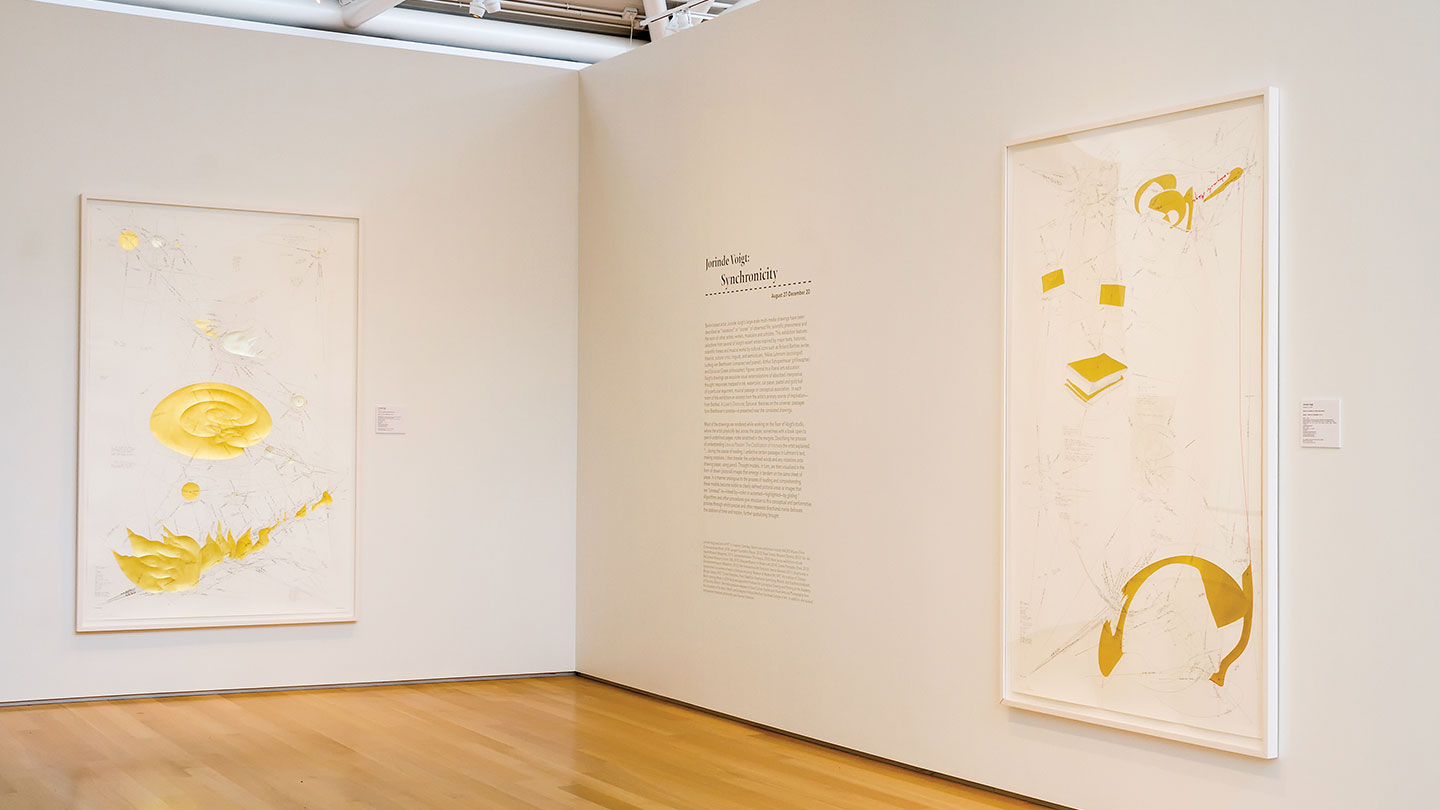
"Epicurus Letter to Pythocles"
Herbie Dittersdorf '19, graduate student in Ann Arbor, Michigan
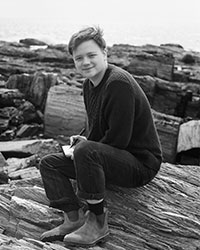 I saw the Gallery’s 2015 exhibition of Jorinde Voigt’s work for the first time during my pre-orientation program. I felt especially drawn to her use of gold leaf in the works inspired by Epicurus’ Letter to Pythocles. The pieces, with their swirling lines and labels, looked like infographics but communicated less-quantitative, more-philosophical ideas. Those pieces (and others in the exhibition) opened my mind to new ways of using the tools offered by the visual arts to break down and think through complex ideas.
I saw the Gallery’s 2015 exhibition of Jorinde Voigt’s work for the first time during my pre-orientation program. I felt especially drawn to her use of gold leaf in the works inspired by Epicurus’ Letter to Pythocles. The pieces, with their swirling lines and labels, looked like infographics but communicated less-quantitative, more-philosophical ideas. Those pieces (and others in the exhibition) opened my mind to new ways of using the tools offered by the visual arts to break down and think through complex ideas.
During my time at the Gallery, I worked consistently as a guard, greeting visitors and getting to know the Gallery staff. I also wrote social media posts for various gallery accounts and photographed events. Right now, I am starting my master’s in the science of information at the University of Michigan, with the intention of pursuing a career as a historical archivist. Getting to know every aspect of the Gund Gallery helped me understand the value of publicly accessible educational institutions and how that value is enhanced by consistent engagement with the local community.
Image: Installation view of "Epicurus Letter to Pythocles I" and "Epicurus Letter to Pythocles II" from "Jorinde Voigt: Synchronicity," on view Aug. 27 - Dec. 20, 2015.

"Dancing at the Louvre"
Vahni Kurra '20, litigation paralegal at Paul, Weiss in New York City
 “The Visitors” by Ragnar Kjartansson was the piece that made me want to be a Gund Gallery associate. I saw this video installation during the fall of my first year at Kenyon and would spend multiple hours watching it from beginning to end (and then the beginning again). The premise is simple: Multiple musicians in different rooms of the same house all play a set of songs together. The result, however, is a haunting, immersive, musical and visual experience that transported me to another place. I thought, “If this is the kind of work and these are the kinds of artists that the Gallery brings in, I have to be a part of it.”
“The Visitors” by Ragnar Kjartansson was the piece that made me want to be a Gund Gallery associate. I saw this video installation during the fall of my first year at Kenyon and would spend multiple hours watching it from beginning to end (and then the beginning again). The premise is simple: Multiple musicians in different rooms of the same house all play a set of songs together. The result, however, is a haunting, immersive, musical and visual experience that transported me to another place. I thought, “If this is the kind of work and these are the kinds of artists that the Gallery brings in, I have to be a part of it.”
Another piece that had a profound impact on me was our acquisition of Faith Ringgold’s “Dancing at the Louvre.” As a kid, I had been obsessed with Ringgold’s book “Tar Beach,” which features many of her quilts and tells the story of a young girl growing up in New York. In high school, I became fascinated with her work, specifically “Dancing at the Louvre,” due to its whimsical and nostalgic quality, as well as its autobiographical significance. I actually couldn’t believe that the Gallery had the piece in its permanent collection. Seeing the work in real life, in the very building I worked and learned in, was surreal. It felt like meeting a celebrity and an old friend at the same time.
As an associate, I mainly worked in the Operations and Visitor Experience and Curatorial groups. As a first-year, I was heavily involved in our first student pop-up show in Mount Vernon. In my sophomore year, I helped curate “Smash the Control Images,” a show featuring pop and funk artists such as Robert Hudson and Red Grooms. I conducted research for art labels and wrote an essay about happenings for the exhibit catalogue. In my senior year, I had the pleasure of working on both “The Art of Trees” and Kate Nichols’ exhibition.
Image: Faith Ringgold (American, b. 1930), "Dancing at the Louvre (The French Collection Part 1: #1)," 1991. Quilted fabric, acrylic paint. 73.5 x 80.5 in. Gund Gallery Collection; gift of David Horvitz '74 and Francie Bishop Good, 2017.5.6. c. Faith Ringgold / Artists Rights Society, New York.
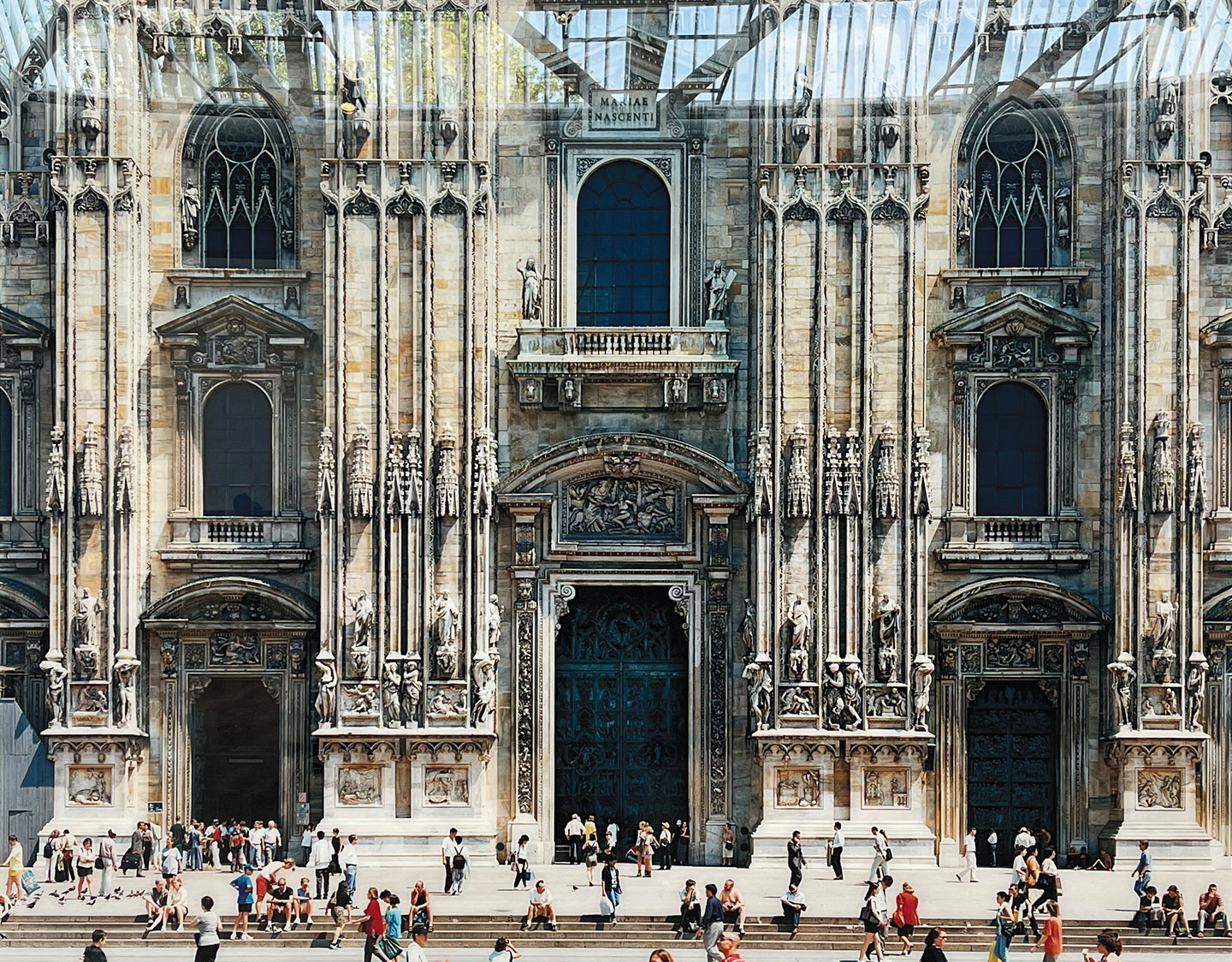
"Milan Cathedral (Façade)"
Jamie Sussman '21, U.S. Senate intern in New York City
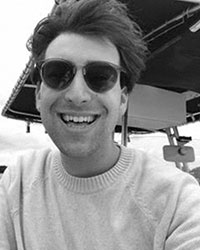
“Milan Cathedral (Façade)” by Thomas Struth is a large-scale color photo-graph in which the history of art and architecture, and the ant-size figures in the foreground, activate and interact with one another. Struth, a student of the Dusseldorf School of Photography, always tried to reinvent the rules of photography and perception, and, in shooting Milan’s famous Duomo, Struth inspired me to consider the image’s role in creating a hyper-reality — one that blurs the line between fiction and reality. While tourists are known to take their own snapshots at these various moments of time, Struth places both the role of architectural and artistic feats and the viewer’s reactions on a whole new scale.
I entered into the Gund Gallery associate program as a digital associate, expanding their social media strategy and assisting in the publication of various student-curated exhibitions. I also helped start the gallery’s film curatorial team, and it has grown into some of the most popular programming the gallery offers. My experience taught me how the power of creative thinking can operate across any organization, from the staff to the larger community. The Gallery has opened many doors for my own work and interest in international affairs and policy.
Image: Thomas Struth (German, b. 1954), "Milan Cathedral (Façade)," 1998. Chromogenic color print. 69 x 87 in. Gund Gallery Collection; gift of Graham and Ann Gund. 2015.2.51.


 The Gund Gallery featured Nellie Mae Abrams’ “Housetop” quilt (1970) in our “Persistence: The Rural in American Art” show in spring 2012. It was the first time I had seen a quilt made by Abrams, an artist from Gee’s Bend, Alabama, firsthand.
The Gund Gallery featured Nellie Mae Abrams’ “Housetop” quilt (1970) in our “Persistence: The Rural in American Art” show in spring 2012. It was the first time I had seen a quilt made by Abrams, an artist from Gee’s Bend, Alabama, firsthand. 
 Because memory is a choice, I choose to remember “The Eyes of Gutete Emerita” like this: They look out at you from two lightboxes mounted side by side on the gallery’s black painted wall. The lightboxes leak fluorescence, an accidental halo, yet the eyes are lusterless.
Because memory is a choice, I choose to remember “The Eyes of Gutete Emerita” like this: They look out at you from two lightboxes mounted side by side on the gallery’s black painted wall. The lightboxes leak fluorescence, an accidental halo, yet the eyes are lusterless.
 The “do it” exhibition at the Gund Gallery, in 2013, was really transformative for me. The show consisted of a series of participatory scripts created by artists, and viewers followed the instructions to produce new, site-specific versions of the works.
The “do it” exhibition at the Gund Gallery, in 2013, was really transformative for me. The show consisted of a series of participatory scripts created by artists, and viewers followed the instructions to produce new, site-specific versions of the works. 
 A work of particular note that’s stuck with me — it’s somewhat unexpected since I at first didn’t love the piece at all! I loathed it — is Shana Moulton’s video piece in the 2015 exhibition “Tchotchke: Mass-Produced Sentimen-tal Objects in Contemporary Art.”
A work of particular note that’s stuck with me — it’s somewhat unexpected since I at first didn’t love the piece at all! I loathed it — is Shana Moulton’s video piece in the 2015 exhibition “Tchotchke: Mass-Produced Sentimen-tal Objects in Contemporary Art.”
 I worked with Collections Manager and Registrar Robin Goodman in archiving the Gund Gallery’s permanent collection when it was first gifted. There are a lot of incredible pieces, but I think I understood the gravity of it all when Robin and I were archiving one afternoon, and I picked up a piece of Peruvian pottery that is now in the Kenyon College collection. At that moment, I was responsible for perhaps the oldest thing under the Gund Gallery’s care. There’s a gravity, respect and complexity you tackle when actively caring for art that hardly anyone gets to experience. For a student to handle work like this? Unheard of. In that moment I under-stood Gund associateship as a rare honor, and the fact I got to experience the rest of my time that way was a gift in itself.
I worked with Collections Manager and Registrar Robin Goodman in archiving the Gund Gallery’s permanent collection when it was first gifted. There are a lot of incredible pieces, but I think I understood the gravity of it all when Robin and I were archiving one afternoon, and I picked up a piece of Peruvian pottery that is now in the Kenyon College collection. At that moment, I was responsible for perhaps the oldest thing under the Gund Gallery’s care. There’s a gravity, respect and complexity you tackle when actively caring for art that hardly anyone gets to experience. For a student to handle work like this? Unheard of. In that moment I under-stood Gund associateship as a rare honor, and the fact I got to experience the rest of my time that way was a gift in itself. 
 I first set foot in the Gund Gallery during the summer of 2013, on a tour during my international student orientation. Immediately, I was captivated by the featured video installation “The Visitors,” by Ragnar Kjartansson. Even now, seven years later, it is difficult to put into words what the exhibit made me feel. I remember lying down on the floor between two people, who later became my best friends, and feeling overwhelmed by feelings of peace, companionship and awe. It was the first time I was truly moved by a work of art, and it led me to applying to become a Gund Gallery associate a year later.
I first set foot in the Gund Gallery during the summer of 2013, on a tour during my international student orientation. Immediately, I was captivated by the featured video installation “The Visitors,” by Ragnar Kjartansson. Even now, seven years later, it is difficult to put into words what the exhibit made me feel. I remember lying down on the floor between two people, who later became my best friends, and feeling overwhelmed by feelings of peace, companionship and awe. It was the first time I was truly moved by a work of art, and it led me to applying to become a Gund Gallery associate a year later.


 I saw the Gallery’s 2015 exhibition of Jorinde Voigt’s work for the first time during my pre-orientation program. I felt especially drawn to her use of gold leaf in the works inspired by Epicurus’ Letter to Pythocles. The pieces, with their swirling lines and labels, looked like infographics but communicated less-quantitative, more-philosophical ideas. Those pieces (and others in the exhibition) opened my mind to new ways of using the tools offered by the visual arts to break down and think through complex ideas.
I saw the Gallery’s 2015 exhibition of Jorinde Voigt’s work for the first time during my pre-orientation program. I felt especially drawn to her use of gold leaf in the works inspired by Epicurus’ Letter to Pythocles. The pieces, with their swirling lines and labels, looked like infographics but communicated less-quantitative, more-philosophical ideas. Those pieces (and others in the exhibition) opened my mind to new ways of using the tools offered by the visual arts to break down and think through complex ideas.
 “The Visitors” by Ragnar Kjartansson was the piece that made me want to be a Gund Gallery associate. I saw this video installation during the fall of my first year at Kenyon and would spend multiple hours watching it from beginning to end (and then the beginning again). The premise is simple: Multiple musicians in different rooms of the same house all play a set of songs together. The result, however, is a haunting, immersive, musical and visual experience that transported me to another place. I thought, “If this is the kind of work and these are the kinds of artists that the Gallery brings in, I have to be a part of it.”
“The Visitors” by Ragnar Kjartansson was the piece that made me want to be a Gund Gallery associate. I saw this video installation during the fall of my first year at Kenyon and would spend multiple hours watching it from beginning to end (and then the beginning again). The premise is simple: Multiple musicians in different rooms of the same house all play a set of songs together. The result, however, is a haunting, immersive, musical and visual experience that transported me to another place. I thought, “If this is the kind of work and these are the kinds of artists that the Gallery brings in, I have to be a part of it.”

